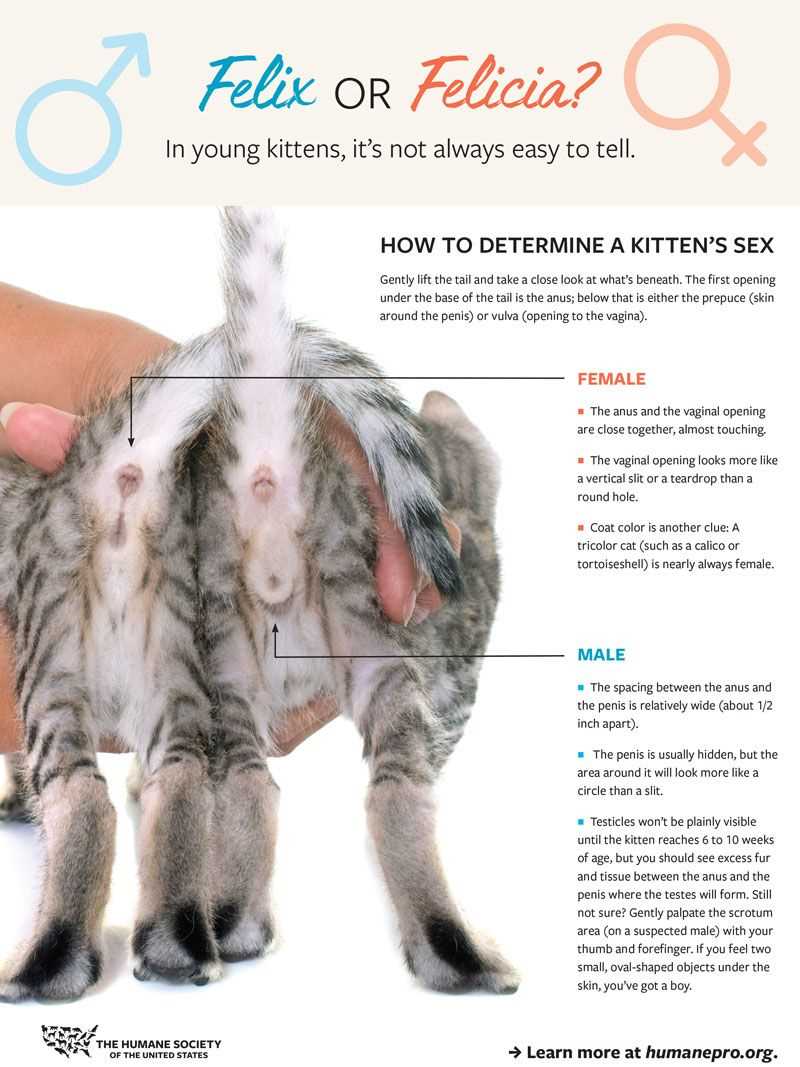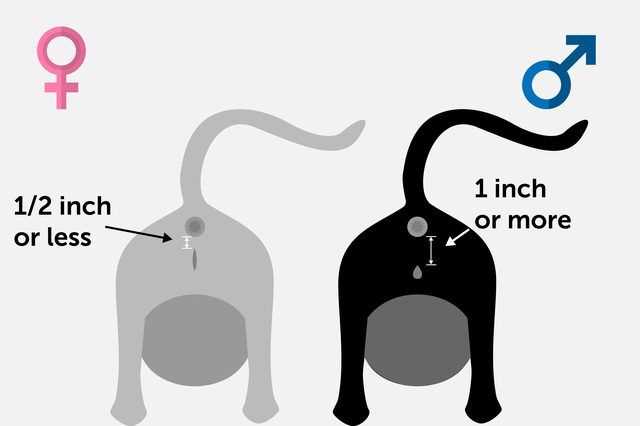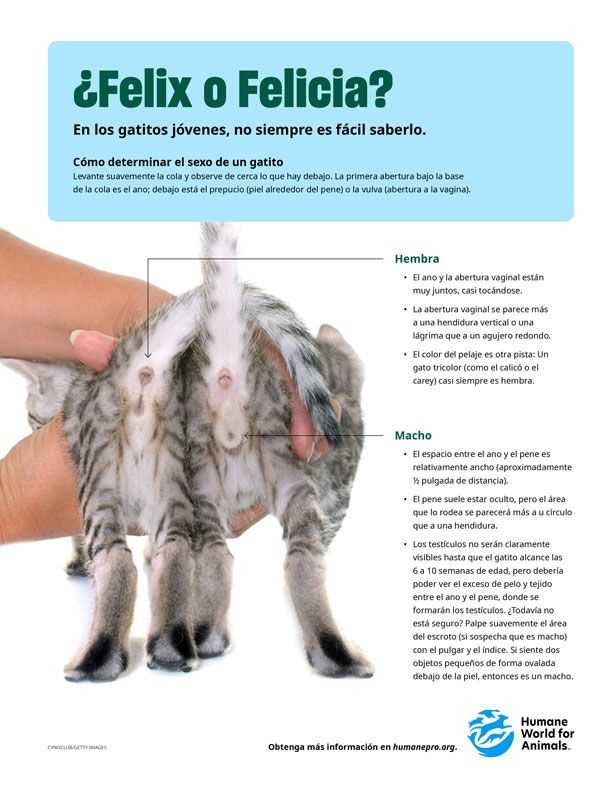Inspect the area just below the tail; this is the most straightforward approach to determine the sex of a feline. Males typically exhibit a greater distance between the anus and the genital opening, while females have a shorter distance. This anatomical difference becomes increasingly apparent as they mature.
Physical characteristics offer another clue. Males often possess larger and more robust bodies, along with broader heads, compared to their female counterparts. However, these traits can vary based on breed and individual genetics. Notably, behavioral differences may also provide insight; males can display more territorial tendencies, while females may exhibit nurturing behaviors.
For a definitive identification, consulting a veterinarian is recommended. They can perform a thorough examination and provide accurate gender classification, ensuring no doubt remains. This approach guarantees clarity and peace of mind for any pet owner.
Identifying Physical Characteristics of Male Cats

For those curious about distinguishing features, male felines typically exhibit a more robust physique. Look for a broader head and a more muscular build compared to their counterparts. The neck often appears thicker as well, giving a more solid appearance overall.
Genital Structure
One of the most definitive signs of a male is found in the genital area. Males possess a noticeable scrotum, which is located just below the anus. This feature becomes more prominent as they mature. If the cat is still young, the distance between the anus and the opening will be greater than in females.
Behavioral Traits
Behavior can also serve as a clue. Males are often more territorial, displaying behaviors such as marking their territory with urine. They may also exhibit a more assertive demeanor, especially during mating season. While this isn’t a physical trait, it complements the other identifiers.
While observing these characteristics, it’s also important to maintain a routine for cleaning and care. For tips on ear hygiene, check out how to clean my cats ears at home.
Recognizing Physical Characteristics of Female Cats
To differentiate a female from a male, focus on specific physical traits. First, observe the genital area. In females, the distance between the anus and the vulva is shorter, usually less than an inch apart.
Body Shape

Females often exhibit a more slender and graceful physique compared to their male counterparts. Their build is generally smaller, with a narrower waist and more delicate features.
Facial Features
Look for softer facial contours. Females tend to have less pronounced cheekbones and a more rounded face than males, who may showcase a broader, more robust head structure.
- Smaller overall size
- Less muscular build
- Rounder face with softer features
When assessing fur patterns, females can display a wider range of colors and patterns, including tortoiseshell and calico, which are often linked to female genetics. Males can also have these patterns, but they are predominantly seen in females.
Additionally, consider behavioral traits. Females may exhibit more nurturing behaviors, especially during play, often treating toys as if they were kittens.
Understanding Behavioral Differences Between Genders
Behavior often reveals a lot about whether a feline is a boy or a girl. Males typically exhibit more assertive and territorial behaviors. They may engage in more vocalizations and display heightened interest in roaming. If a tomcat is intact, he might mark his territory with scent or even engage in fighting with other males.
On the other paw, females tend to show nurturing instincts, especially when they are in heat. During this time, they might become more vocal and affectionate, seeking attention from humans and other animals. Spayed females often maintain a calmer demeanor compared to their intact counterparts, who may display more pronounced behaviors associated with heat cycles.
Social Interactions
Interactions with other pets can vary significantly. Boys are often more playful and boisterous, engaging in rough play and chasing. Girls, while playful too, might prefer gentle interactions and cuddling. Observing how a pet interacts with others can provide insights into their gender.
Play Preferences
Playtime choices can also be telling. Males may gravitate towards more aggressive play toys or games that involve chasing, while females often prefer softer toys or interactive games that mimic hunting. Understanding these preferences can help in identifying their gender through behavior.
Utilizing Veterinary Resources for Accurate Identification
Consulting a veterinarian is a reliable step for determining the gender of a furry companion. Professionals possess the expertise and tools to accurately identify anatomical features that may not be easily visible to the untrained eye.
Veterinary Examinations

A thorough physical examination by a vet can reveal subtle indicators of gender. They can assess the genital area, which is the most definitive method of identification. If there’s uncertainty, a simple ultrasound or X-ray can provide clarity.
Behavioral Insights from Experts
Veterinarians often observe behavioral tendencies that can suggest gender, such as territorial behavior or mating calls. Consulting with a vet can provide insights into these patterns, enhancing understanding of your companion’s behavior.
Video:
Inspect the area just below the tail; this is the most straightforward approach to determine the sex of a feline. Males typically exhibit a greater distance between the anus and the genital opening, while females have a shorter distance. This anatomical difference becomes increasingly apparent as they mature.
Physical characteristics offer another clue. Males often possess larger and more robust bodies, along with broader heads, compared to their female counterparts. However, these traits can vary based on breed and individual genetics. Notably, behavioral differences may also provide insight; males can display more territorial tendencies, while females may exhibit nurturing behaviors.
For a definitive identification, consulting a veterinarian is recommended. They can perform a thorough examination and provide accurate gender classification, ensuring no doubt remains. This approach guarantees clarity and peace of mind for any pet owner.
Identifying Physical Characteristics of Male Cats

For those curious about distinguishing features, male felines typically exhibit a more robust physique. Look for a broader head and a more muscular build compared to their counterparts. The neck often appears thicker as well, giving a more solid appearance overall.
Genital Structure
One of the most definitive signs of a male is found in the genital area. Males possess a noticeable scrotum, which is located just below the anus. This feature becomes more prominent as they mature. If the cat is still young, the distance between the anus and the opening will be greater than in females.
Behavioral Traits
Behavior can also serve as a clue. Males are often more territorial, displaying behaviors such as marking their territory with urine. They may also exhibit a more assertive demeanor, especially during mating season. While this isn’t a physical trait, it complements the other identifiers.
While observing these characteristics, it’s also important to maintain a routine for cleaning and care. For tips on ear hygiene, check out how to clean my cats ears at home.
Recognizing Physical Characteristics of Female Cats
To differentiate a female from a male, focus on specific physical traits. First, observe the genital area. In females, the distance between the anus and the vulva is shorter, usually less than an inch apart.
Body Shape

Females often exhibit a more slender and graceful physique compared to their male counterparts. Their build is generally smaller, with a narrower waist and more delicate features.
Facial Features
Look for softer facial contours. Females tend to have less pronounced cheekbones and a more rounded face than males, who may showcase a broader, more robust head structure.
- Smaller overall size
- Less muscular build
- Rounder face with softer features
When assessing fur patterns, females can display a wider range of colors and patterns, including tortoiseshell and calico, which are often linked to female genetics. Males can also have these patterns, but they are predominantly seen in females.
Additionally, consider behavioral traits. Females may exhibit more nurturing behaviors, especially during play, often treating toys as if they were kittens.
Understanding Behavioral Differences Between Genders
Behavior often reveals a lot about whether a feline is a boy or a girl. Males typically exhibit more assertive and territorial behaviors. They may engage in more vocalizations and display heightened interest in roaming. If a tomcat is intact, he might mark his territory with scent or even engage in fighting with other males.
On the other paw, females tend to show nurturing instincts, especially when they are in heat. During this time, they might become more vocal and affectionate, seeking attention from humans and other animals. Spayed females often maintain a calmer demeanor compared to their intact counterparts, who may display more pronounced behaviors associated with heat cycles.
Social Interactions
Interactions with other pets can vary significantly. Boys are often more playful and boisterous, engaging in rough play and chasing. Girls, while playful too, might prefer gentle interactions and cuddling. Observing how a pet interacts with others can provide insights into their gender.
Play Preferences
Playtime choices can also be telling. Males may gravitate towards more aggressive play toys or games that involve chasing, while females often prefer softer toys or interactive games that mimic hunting. Understanding these preferences can help in identifying their gender through behavior.
Utilizing Veterinary Resources for Accurate Identification
Consulting a veterinarian is a reliable step for determining the gender of a furry companion. Professionals possess the expertise and tools to accurately identify anatomical features that may not be easily visible to the untrained eye.
Veterinary Examinations

A thorough physical examination by a vet can reveal subtle indicators of gender. They can assess the genital area, which is the most definitive method of identification. If there’s uncertainty, a simple ultrasound or X-ray can provide clarity.
Behavioral Insights from Experts
Veterinarians often observe behavioral tendencies that can suggest gender, such as territorial behavior or mating calls. Consulting with a vet can provide insights into these patterns, enhancing understanding of your companion’s behavior.
Video:
Inspect the area just below the tail; this is the most straightforward approach to determine the sex of a feline. Males typically exhibit a greater distance between the anus and the genital opening, while females have a shorter distance. This anatomical difference becomes increasingly apparent as they mature.
Physical characteristics offer another clue. Males often possess larger and more robust bodies, along with broader heads, compared to their female counterparts. However, these traits can vary based on breed and individual genetics. Notably, behavioral differences may also provide insight; males can display more territorial tendencies, while females may exhibit nurturing behaviors.
For a definitive identification, consulting a veterinarian is recommended. They can perform a thorough examination and provide accurate gender classification, ensuring no doubt remains. This approach guarantees clarity and peace of mind for any pet owner.
Identifying Physical Characteristics of Male Cats

For those curious about distinguishing features, male felines typically exhibit a more robust physique. Look for a broader head and a more muscular build compared to their counterparts. The neck often appears thicker as well, giving a more solid appearance overall.
Genital Structure
One of the most definitive signs of a male is found in the genital area. Males possess a noticeable scrotum, which is located just below the anus. This feature becomes more prominent as they mature. If the cat is still young, the distance between the anus and the opening will be greater than in females.
Behavioral Traits
Behavior can also serve as a clue. Males are often more territorial, displaying behaviors such as marking their territory with urine. They may also exhibit a more assertive demeanor, especially during mating season. While this isn’t a physical trait, it complements the other identifiers.
While observing these characteristics, it’s also important to maintain a routine for cleaning and care. For tips on ear hygiene, check out how to clean my cats ears at home.
Recognizing Physical Characteristics of Female Cats
To differentiate a female from a male, focus on specific physical traits. First, observe the genital area. In females, the distance between the anus and the vulva is shorter, usually less than an inch apart.
Body Shape

Females often exhibit a more slender and graceful physique compared to their male counterparts. Their build is generally smaller, with a narrower waist and more delicate features.
Facial Features
Look for softer facial contours. Females tend to have less pronounced cheekbones and a more rounded face than males, who may showcase a broader, more robust head structure.
- Smaller overall size
- Less muscular build
- Rounder face with softer features
When assessing fur patterns, females can display a wider range of colors and patterns, including tortoiseshell and calico, which are often linked to female genetics. Males can also have these patterns, but they are predominantly seen in females.
Additionally, consider behavioral traits. Females may exhibit more nurturing behaviors, especially during play, often treating toys as if they were kittens.
Understanding Behavioral Differences Between Genders
Behavior often reveals a lot about whether a feline is a boy or a girl. Males typically exhibit more assertive and territorial behaviors. They may engage in more vocalizations and display heightened interest in roaming. If a tomcat is intact, he might mark his territory with scent or even engage in fighting with other males.
On the other paw, females tend to show nurturing instincts, especially when they are in heat. During this time, they might become more vocal and affectionate, seeking attention from humans and other animals. Spayed females often maintain a calmer demeanor compared to their intact counterparts, who may display more pronounced behaviors associated with heat cycles.
Social Interactions
Interactions with other pets can vary significantly. Boys are often more playful and boisterous, engaging in rough play and chasing. Girls, while playful too, might prefer gentle interactions and cuddling. Observing how a pet interacts with others can provide insights into their gender.
Play Preferences
Playtime choices can also be telling. Males may gravitate towards more aggressive play toys or games that involve chasing, while females often prefer softer toys or interactive games that mimic hunting. Understanding these preferences can help in identifying their gender through behavior.
Utilizing Veterinary Resources for Accurate Identification
Consulting a veterinarian is a reliable step for determining the gender of a furry companion. Professionals possess the expertise and tools to accurately identify anatomical features that may not be easily visible to the untrained eye.
Veterinary Examinations

A thorough physical examination by a vet can reveal subtle indicators of gender. They can assess the genital area, which is the most definitive method of identification. If there’s uncertainty, a simple ultrasound or X-ray can provide clarity.
Behavioral Insights from Experts
Veterinarians often observe behavioral tendencies that can suggest gender, such as territorial behavior or mating calls. Consulting with a vet can provide insights into these patterns, enhancing understanding of your companion’s behavior.









